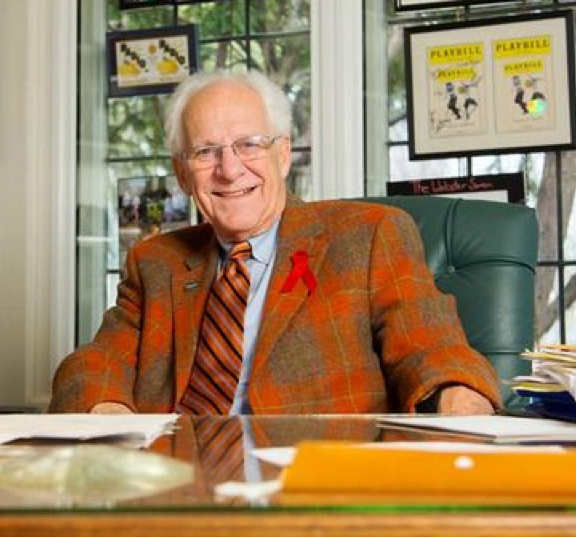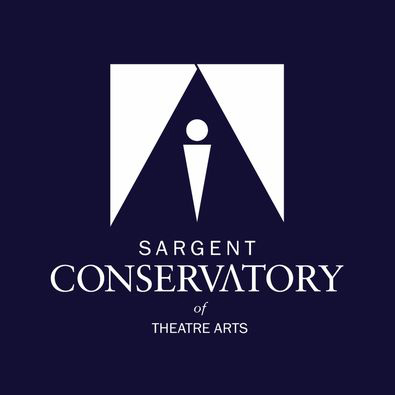
Webster University has renamed its nationally renowned Conservatory of Theatre Arts in honor of the late Peter Sargent, the founding dean of the Leigh Gerdine College of Fine Arts. Supporters, members of Sargent’s family, and Webster alumni celebrated the Sargent Conservatory of Theatre Arts during an event on Nov. 13 in the Webster University Loretto-Hilton Center in St. Louis, MO.
Sargent, who was with Webster from 1966 until his death November 27, 2019, was the founding dean of the Webster University Leigh Gerdine College of Fine Arts. He spent his life dedicated to the arts in St. Louis, and was a recognized local, state, and national leader in the performing arts. Sargent was a mentor to many theatermakers in the industry. The Conservatory’s national reputation was established under his leadership and with the team of performing and design professionals he assembled on faculty in the College of Fine Arts.

Reflecting on Sargent’s Impact
At the renaming event, Webster leaders and alumni shared reflections on Sargent’s impact and the pioneering role the Conservatory has played. Their remarks were followed by a special performance by current Conservatory students.
“No matter how you defined your relationship with Peter Sargent, he was a force to be reckoned with,” commented Dean Paul Steger as he opened the event. “His strength of will, sense of humor, humanity, and his fierce determination were what made everyone who encountered him lift their head a little higher and smile a little brighter.”
“Peter carried a torch first lit by the Loretto Sisters—it is a torch all of us who love Webster carry with us each day,” remarked Chancellor Elizabeth J. Stroble. “I thank all of you for your support then and now. That is how vision is realized and passed from generation to generation. From the Sisters and Conrad Hilton to Marita Woodruff and Peter Sargent, to all of the longtime faculty and staff who have devoted their time to these students, to those of us here today, and all of those who will follow.”
Webster University President Julian Schuster referenced two points of pride that Sargent believed set Webster’s Conservatory apart: its ensemble nature and its long running partnerships with professional companies like the Repertory Theatre of St. Louis, The Muny, and the Opera Theatre of Saint Louis. “He emphasized the importance of everyone working together, putting negative competition aside, focusing on creating that experience as a whole that is greater than the sum of its parts,” Schuster enumerated. “Let us remember him and the legacy of his life.”
Gad Guterman, chair of the Conservatory, said that was part of Sargent’s nature: “No one embodied ensemble more than Peter Sargent,” Guterman noted. “He understood how pieces fit in the whole and made people feel seen and valued. We will continue building on a legacy built on ensemble.”
Webster alumni, actors Jenifer Lewis and Rocky Carroll, also had a part in the event, sending their well-wishes and memories of Sargent via pre-recorded video. “I am honored to be a graduate of the conservatory,” Carroll said in his video. “But I am more proud to have been a part of Peter’s legacy. I have nothing but gratitude.”
A Long List of Accomplishments by the Man in Plaid
Among Sargent’s many accomplishments were the founding of The Repertory Theatre of St. Louis, as well as his professional contributions to the Opera Theatre of Saint Louis, The Municipal Theatre Association of St. Louis (The Muny), and the Shakespeare Festival St. Louis, to name just a few.
Sargent, affectionately labeled “the man in plaid” by his staff and students for his love of plaid jackets, earned a Bachelor of Fine Arts from the Carnegie Institute of Technology in 1959 and a Master of Fine Arts from Yale University in 1963.
He was hired by Webster University in 1966 to head the then-new lighting design and stage management program, which was created for the then-brand-new Webster University Loretto-Hilton Center. That year, he helped found the Repertory Theatre of St. Louis. In 1967, he founded Webster University’s Conservatory of Theatre Arts.
He was appointed the chair of the Fine Arts Department in 1969 and was promoted to be the first dean for the Leigh Gerdine College of Fine Arts in 1995, a college created in 1990 and named after a former president of Webster University. Today, the Leigh Gerdine College of Fine Arts has more than 500 undergraduate students studying majors in the visual arts, dance, music, and theatre.
“Peter left a lasting impact on the Leigh Gerdine College of Fine Arts, on Webster University, on the St. Louis arts community, and on the national landscape of fine arts. The thousands of his graduates continue to be major influencers throughout the world of art. Peter left a legacy, a precious gift we must preserve, nurture, and grow,” said Webster University President Julian Schuster. “He defined art at Webster: flamboyant yet very modest; jovial, yet perceptive and thoughtful, and most importantly kind and warm—a friend indeed. His loss is real and immeasurable, but he will always be a part of our community.”
Sargent belonged to many organizations and received numerous honors for his contributions to the arts and arts education. Sargent advised and counseled numerous theaters over the years, including The Playhouse in the Park in Cincinnati, Hope Summer Repertory Theatre, The Goodspeed Opera House, and The Great Lakes Shakespeare Festival. He served as the first production manager and lighting director of The Opera Theatre of Saint Louis, and he continued to contribute to the institution for many years. He was a member of the College of Fellows of American Theatre and The National Theatre Conference.
He was a recipient of a Special Citation for Education from the United States Institute for Theatre Technology (USITT). Additionally, he was a member of the Educational Theatre Association Hall of Fame and a recipient of the President’s Award from that same organization; he received a Lifetime Achievement Award from the Arts and Education Council of Greater St. Louis; received the Thomas Di Gaetani Award for leadership in theatre technology from USITT; and was recognized with the Achievement in the Arts Award from the Missouri Arts Council.
Sargent, and Webster University’s Stage Management program, were honored at an awards ceremony held by the Stage Managers’ Association (SMA) in New York City on Sept. 17, 2018. The event honored recipients of the Del Hughes Lifetime Achievement in the Art of Stage Management Award, as well as a special award recognizing Sargent and Webster’s specialized Conservatory program.
Sargent Conservatory of Theatre Arts
The renaming of Webster’s Conservatory was made possible by fundraising led by several Webster alumni, notably Mary Alice Dwyer-Dobbin ‘63, Laura Herring ‘66, John Nickel ‘75 and David P. Weiss ‘75, who each also spoke at the event. A plaque with the new Sargent Conservatory logo was installed in the Loretto-Hilton Center.
These Webster alumni added their thoughts on Sargent. “I am so pleased to make this happen and I know Peter is too,” Dwyer-Dobbin said. “Peter invited others to see others for who they were and who they would become,” Herring recalled. Weiss shared one of the lessons Sargent often gave to students as they went through their evolution as artists: “One learns more from failure than success.” And underlining a theme shared by many, Nickel said, “Peter was always looking at the bigger picture.”


